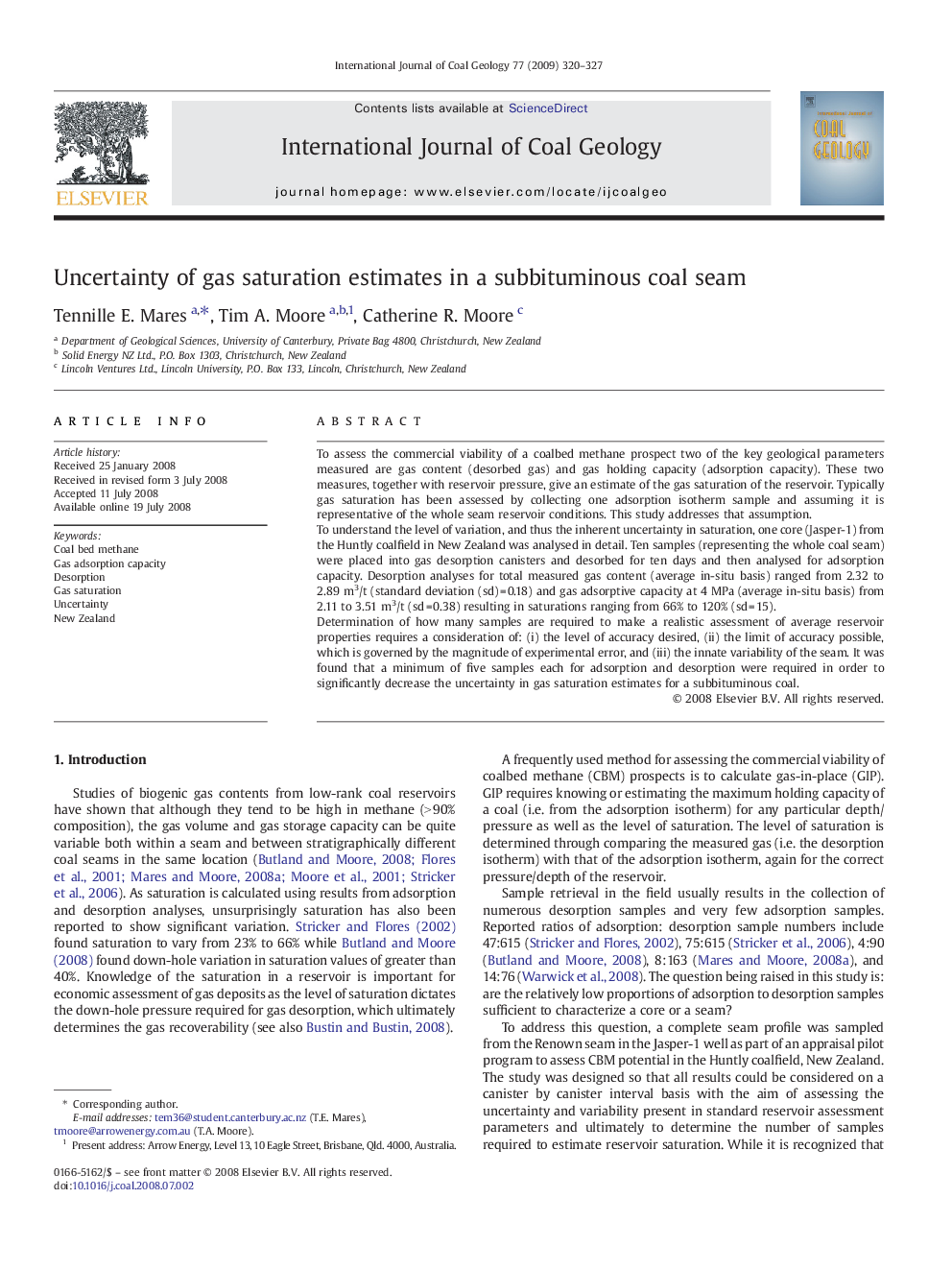| Article ID | Journal | Published Year | Pages | File Type |
|---|---|---|---|---|
| 1754092 | International Journal of Coal Geology | 2009 | 8 Pages |
To assess the commercial viability of a coalbed methane prospect two of the key geological parameters measured are gas content (desorbed gas) and gas holding capacity (adsorption capacity). These two measures, together with reservoir pressure, give an estimate of the gas saturation of the reservoir. Typically gas saturation has been assessed by collecting one adsorption isotherm sample and assuming it is representative of the whole seam reservoir conditions. This study addresses that assumption.To understand the level of variation, and thus the inherent uncertainty in saturation, one core (Jasper-1) from the Huntly coalfield in New Zealand was analysed in detail. Ten samples (representing the whole coal seam) were placed into gas desorption canisters and desorbed for ten days and then analysed for adsorption capacity. Desorption analyses for total measured gas content (average in-situ basis) ranged from 2.32 to 2.89 m3/t (standard deviation (sd) = 0.18) and gas adsorptive capacity at 4 MPa (average in-situ basis) from 2.11 to 3.51 m3/t (sd = 0.38) resulting in saturations ranging from 66% to 120% (sd = 15).Determination of how many samples are required to make a realistic assessment of average reservoir properties requires a consideration of: (i) the level of accuracy desired, (ii) the limit of accuracy possible, which is governed by the magnitude of experimental error, and (iii) the innate variability of the seam. It was found that a minimum of five samples each for adsorption and desorption were required in order to significantly decrease the uncertainty in gas saturation estimates for a subbituminous coal.
